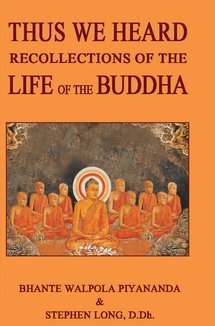

Most ebook files are in PDF format, so you can easily read them using various software such as Foxit Reader or directly on the Google Chrome browser.
Some ebook files are released by publishers in other formats such as .awz, .mobi, .epub, .fb2, etc. You may need to install specific software to read these formats on mobile/PC, such as Calibre.
Please read the tutorial at this link: https://ebookbell.com/faq
We offer FREE conversion to the popular formats you request; however, this may take some time. Therefore, right after payment, please email us, and we will try to provide the service as quickly as possible.
For some exceptional file formats or broken links (if any), please refrain from opening any disputes. Instead, email us first, and we will try to assist within a maximum of 6 hours.
EbookBell Team

4.1
50 reviewsThe timeless teachings of the Buddha have been our source of inspiration, our guidelines for happy living, our motivation for practice, and our tools for higher spiritual attainment for many decades.
The question always arises: Just who was this prince who renounced the world to seek enlightenment and eventually became the Buddha?
Many books have attempted to answer this question, and many have done an admirable job. None, however, have really satisfied our desire for an eye-witness account of who he really was.
We decided that the best and only place to look for him was the Tripitaka, the Three Baskets of 84,000 teachings that were organized during the First Sangha Council ninety days after the Buddha passed away, and then first written down three hundred years after the Buddha’s Parinibbana.
Our first intention for writing this book was to present a biography of the Buddha from the perspective of the Tripitaka itself. The ancient Pali-language Canon contains a wealth of information on this subject, and we decided to mine it for deeper clues that might enable us to discover exactly who and what the Buddha was – minus the speculations, fables, and tales from the early Buddhist commentaries.
Our second intention for writing this book was to share verbatim as many translations of the Buddha’s primary messages as we could, realizing that most readers would never have the chance to read them unless they took it upon themselves to engage in countless hours of research.
Our third intention for writing this book was to share the life of the Buddha in a way that would appeal to Westerners and Easterners alike. To do that, we realized the need for a contextual story platform that would make the material both accessible and entertaining: hence the creation of the fictitious First Sangha Council sub-committee
that recollected the life of the Buddha.